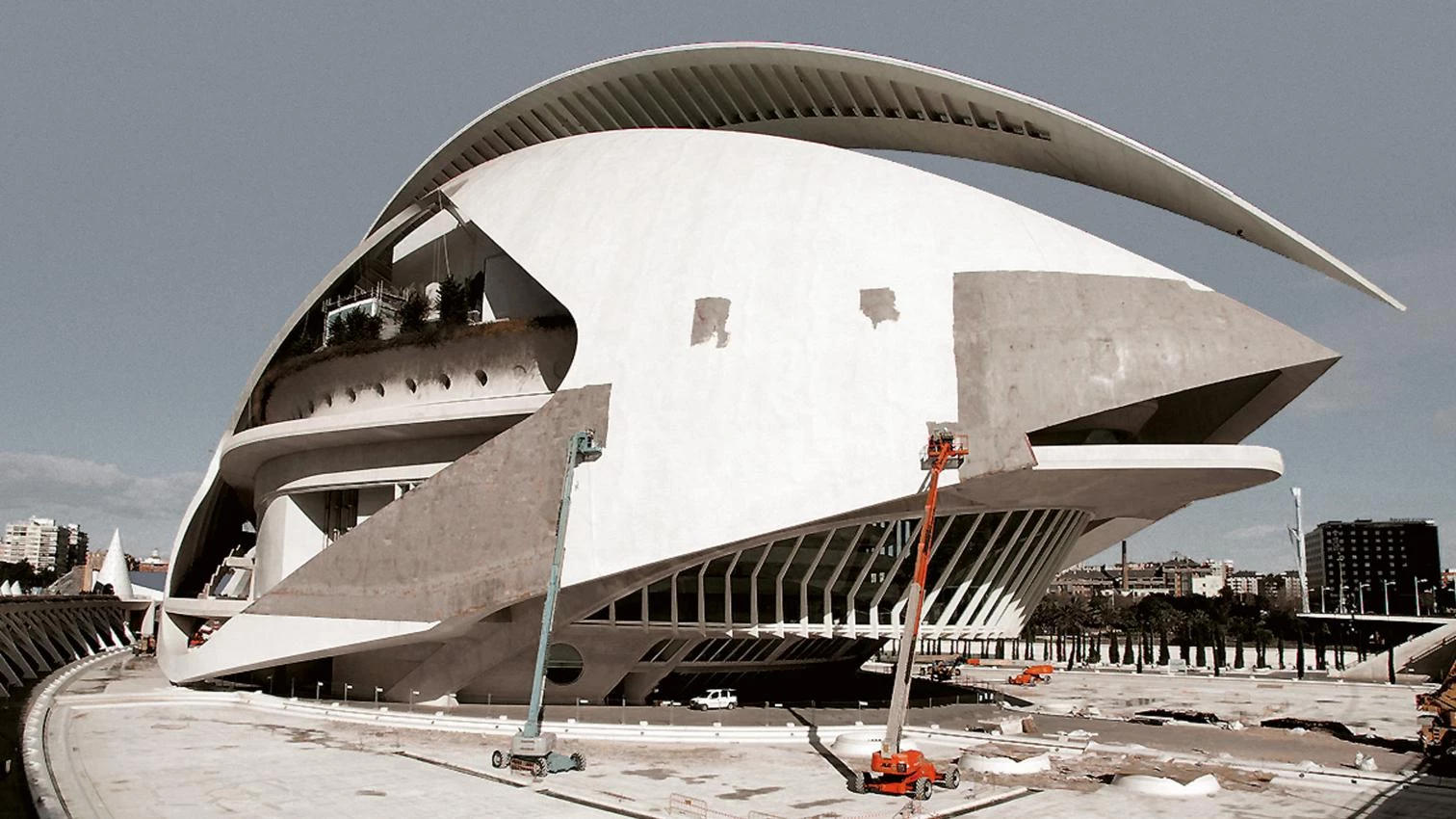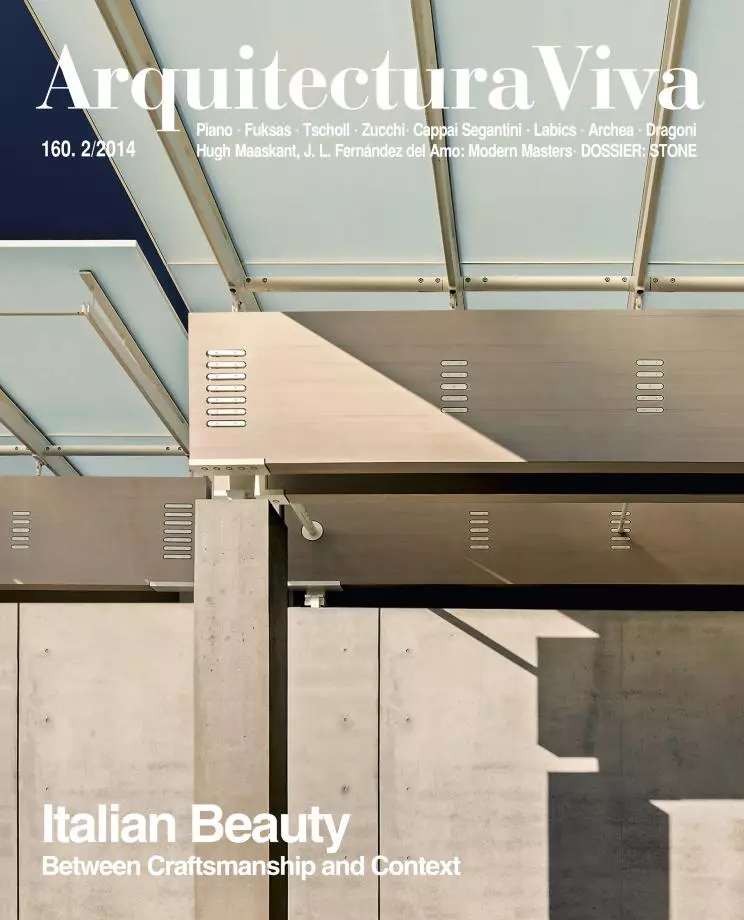
Calatrava’s architecture gets a lot of media hype even when it fails. At the same time that cranes surrounded the Palau de les Arts opera house in order to strip it of its Gaudiesque mosaic cladding, other cranes and scaffolds – no less spectacular – were colonizing the esplanades of the City of Arts and Sciences to prepare for the shooting of scenes of Tomorrowland, a Disney movie starring George Clooney whose plot, somewhat premonitorily, involves the search for a “lost and enigmatic place.” In this case the retro-futurism was not so much a cinematographic set – Calatrava buildings have already played spaceships or been Bollywood scenes before – as the star of a construction drama, thanks to the unquestionable fact that the mosaic tesseras covering the 8,000 square meters of the aerodynamic shell were falling off.
The dismantling of the ceramic coating and its replacement by a more durable solution that includes graphene paint, and the costs of which have been voluntarily assumed by the architect and the contractor, is the outcome of a process that began early in 2013, when swelllings and wrinkles appearing on the roof of the opera house – which had opened in 2005 – set off alarms. The Valencian regional government shrugged off the matter at the time, attributing the evident deterioration to an optic effect caused by the welding ropes in the metal shell, which, the authorities said, show through the mosaic. But on 26 December, when bits of the roof began to actually fall off, the Generalitat had no choice but to address the problem, and announced its decision to close and cordon off the building, immediately ordering the preparation of a technical report with an identification of the real causes of the defects.
The report concurred with those who maintained that the construction solution applied to the roof – a ceramic cladding fixed to a metal base by means of a rubber adhesive – had amounted to something like “tiling the hull of a ship.” Indeed, the loosening of the pieces was a “generalized failure” of adhesion caused by an error in design or poor execution or both, and could be explained by the fact that ceramic and steel have different coefficients of dilation; an important difference considering that the temperature of the roof can vary between 4 ºC in winter and 60 ºC in summer.
Throughout the process the controversy has had ideological tones, channeled into an increasingly virulent campaign that wielded ad hominem arguments in a website specially devoted to the “ruinous projects” of Calatrava, described there as a “‘starchitect’ born in Valencia and residing in Switzerland who has charged the Generalitat Valenciana about 100 million euros tax-free.”
Sensationalism aside, the focus of this website – which Calatrava has announced he is suing – probably has public opinion on its side, what with people sensitized to corruption scandals and to the revelations about the Valencian architect that have been raining upon us throughout 2013, his annus horribilis, from his alleged involvement in the Palma Arena case to the polemic around his projects in Oviedo and Venice.
In Spain, a feast of vanities is giving way to a bonfire of vanities. But maybe the aversion to Calatrava – after all but the tip of the iceberg of a degraded system – ought to be directed at those who assigned him these projects in the first place, and who with public funds paid fees more suited to George Clooney of Tomorrowland than to an architect.





